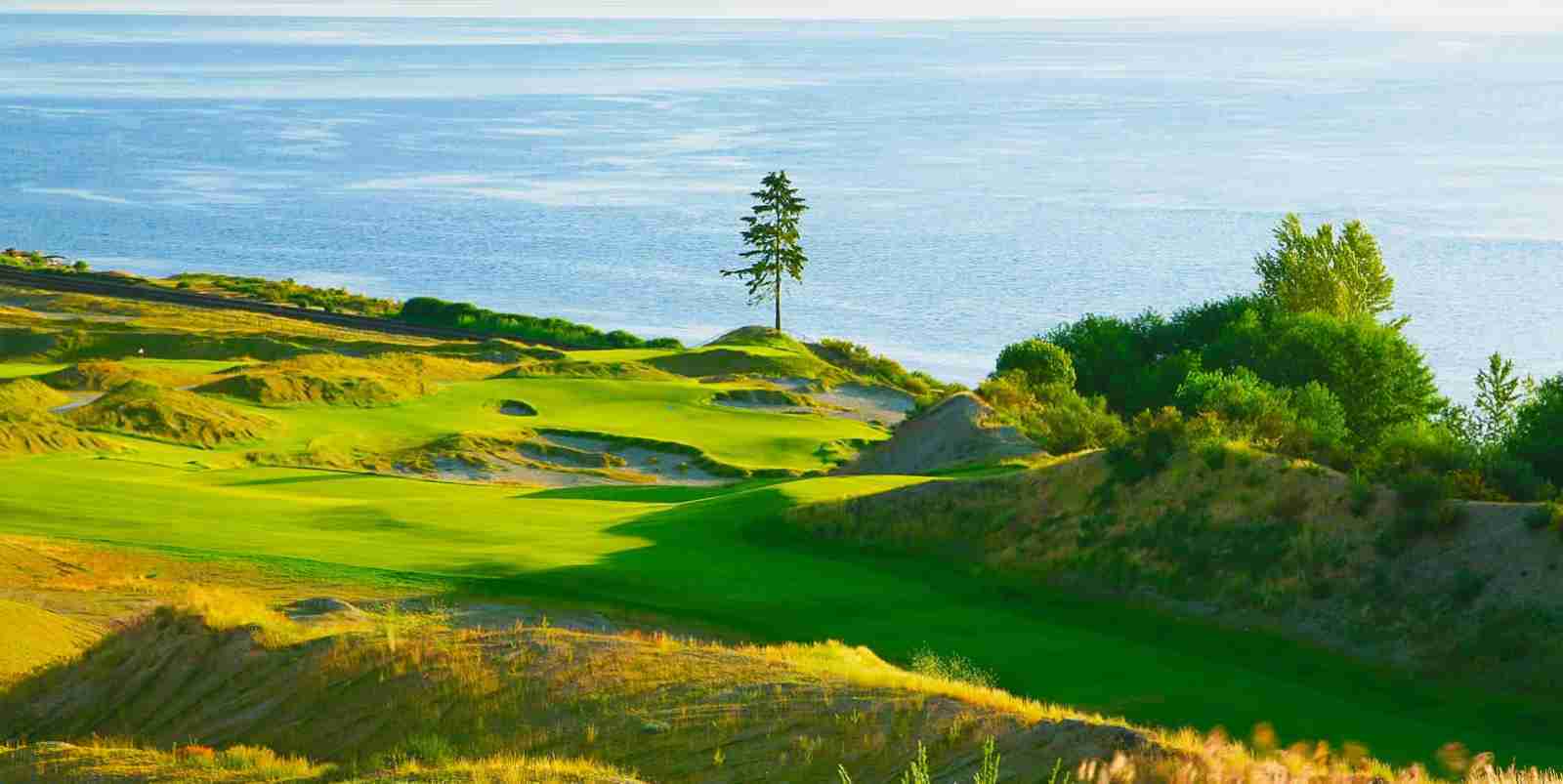By TIM BOOTH
AP Sports Writer
UNIVERSITY PLACE, Wash. (AP) _ Chambers Bay got a much needed watering Sunday night and in the early hours of Monday morning after Jordan Spieth was crowned the latest U.S. Open champion.
Thanks to the shower from sprinklers on the dried out golf course, by Monday afternoon pockets of green started to return.
Now comes the real question: Did Chambers Bay put on a good enough show for the USGA and major golf to return?
Chambers Bay provided spectacular scenery, a challenging layout that was adored by some and loathed by plenty of others, and brought buzz to the U.S. Open.
The links-style golf course on the shore of Puget Sound became the story of the U.S. Open for most of last week until the theatrics of Spieth and runner-up Dustin Johnson on the back nine Sunday let golf reclaim center stage.
“The players are ultimately are the ones that drive the drama, but the arena, these last four holes, architecturally are almost made for big changes in scoring, and people don’t talk about that,” USGA executive director Mike Davis said late Sunday night. “What makes golf exciting, tournament golf, is when you see big swings in scoring.”
The immediate future for Chambers Bay will be returning to being a public golf course, now with the type of buzz it could only dreamed of reaching before the U.S. Open arrived. But it was a golf course built with the intent on hosting championships and its future in that realm is a trickier question to answer.
World No. 1 Rory McIlroy was asked about the U.S. Open returning to Chambers Bay. After calculating he had about 20 years left in his career, McIlroy said, “if they come back here in about 20 years time I’d be all right with that.”
The biggest question with Chambers Bay will be its greens and whether they can remain all fescue after having problems with poa annua invading, causing bumpy, uneven putting surfaces. The 1st, 4th, 12th and 15th holes were exceptionally bumpy.
The two greens that played the best were Nos. 7 and 13, both of which were reconstructed after the U.S. Amateur in 2010.
But even with problems on the greens, the unique challenge presented by Chambers Bay and the versatility of so many holes outweighed those issues.
“You have to use your brain which is a rare thing in modern golf and something we’re not very good at, I don’t think,” former U.S. Open Geoff Ogilvy said. “ … There’s a lot of talk about the greens and stuff like that, but forever great putters have putted well on bad greens, forever.”
Outside the ropes, Chambers Bay appeared to be a success, with the lone exception being the difficulty for fans to traverse the golf course to follow groups and getting clear, close looks at the action. Most fans who wanted clear views of golf shots were forced into grandstands that typically had views of only one hole.
The USGA said it roped the golf course for safety and not spectator friendliness. But the tournament was embraced by the region, arguably the largest event since baseball’s All-Star Game in 2001 or the 1994 Final Four, and the biggest golf tournament since the 1998 PGA Championship at Sahalee.
Even Speith acknowledged the fans with a Seattle Seahawks reference in his speech after accepting the championship trophy.
“We were joking about, we could certainly tell why the NFL teams don’t like to come to Seattle to play,” Spieth said. “These fans are awesome. I mean it’s unbelievable.”
Chambers Bay was the youngest golf course since Hazeltine in 1970 to host a U.S. Open. Immediately, Hazeltine became part of the major championship rotation, hosting the U.S. Open and PGA Championship since 1970. Next year, it will host the Ryder Cup.
But with the USGA’s involvement and input in the construction of Chambers Bay from the outset, it would seem one of their championships being the most likely target.
The U.S. Open is booked through 2021 and the back-end of that stretch includes championships on the West Coast at Pebble Beach (2019) and Torrey Pines (2021). With the USGA sprinkling in more new courses like Chambers Bay and Erin Hills in 2017, the list of options has only grown.
If a U.S. Open returns to Chambers Bay, it would likely be the middle of the 2020s.
“I think the Pacific Northwest is starved for big golf,” Brandt Snedeker said. “I thought it was a great thing to be here. … I hope we can come back soon, because I had a blast up here.”












No Comment